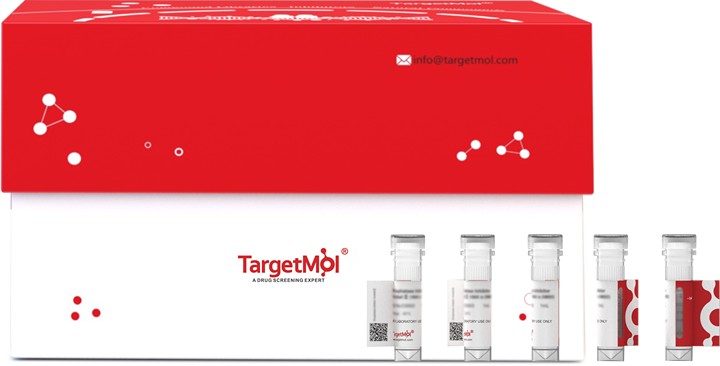Shopping Cart
- Remove All
 Your shopping cart is currently empty
Your shopping cart is currently empty

S100A4 Protein, Rat, Recombinant (His & Myc) is expressed in E. coli expression system with N-10xHis and C-Myc tag. The predicted molecular weight is 18.6 kDa and the accession number is P05942.

| Pack Size | Price | Availability | Quantity |
|---|---|---|---|
| 20 μg | $360 | 20 days | |
| 100 μg | $745 | 20 days | |
| 1 mg | $2,530 | 20 days |
| Biological Activity | Activity has not been tested. It is theoretically active, but we cannot guarantee it. If you require protein activity, we recommend choosing the eukaryotic expression version first. |
| Description | S100A4 Protein, Rat, Recombinant (His & Myc) is expressed in E. coli expression system with N-10xHis and C-Myc tag. The predicted molecular weight is 18.6 kDa and the accession number is P05942. |
| Species | Rat |
| Expression System | E. coli |
| Tag | N-10xHis, C-Myc |
| Accession Number | P05942 |
| Synonyms | S100a4,S100 calcium-binding protein A4,Protein S100-A4,Placental calcium-binding protein,P9K,Nerve growth factor-induced protein 42A,Metastasin |
| Amino Acid | ARPLEEALDVIVSTFHKYSGNEGDKFKLNKTELKELLTRELPSFLGRRTDEAAFQKLMNNLDSNRDNEVDFQEYCVFLSCIAMMCNEFFEGCPDKEPRKK |
| Construction | 2-101 aa |
| Protein Purity | > 85% as determined by SDS-PAGE. |
| Molecular Weight | 18.6 kDa (predicted) |
| Endotoxin | < 1.0 EU/μg of the protein as determined by the LAL method. |
| Formulation | Tris-based buffer, 50% glycerol |
| Reconstitution | A Certificate of Analysis (CoA) containing reconstitution instructions is included with the products. Please refer to the CoA for detailed information. |
| Stability & Storage | Lyophilized powders can be stably stored for over 12 months, while liquid products can be stored for 6-12 months at -80°C. For reconstituted protein solutions, the solution can be stored at -20°C to -80°C for at least 3 months. Please avoid multiple freeze-thaw cycles and store products in aliquots. |
| Shipping | In general, Lyophilized powders are shipping with blue ice. Solutions are shipping with dry ice. |
| Research Background | Calcium-binding protein that plays a role in various cellular processes including motility, angiogenesis, cell differentiation, apoptosis, and autophagy. Increases cell motility and invasiveness by interacting with non-muscle myosin heavy chain (NMMHC) IIA/MYH9. Mechanistically, promotes filament depolymerization and increases the amount of soluble myosin-IIA, resulting in the formation of stable protrusions facilitating chemotaxis. Modulates also the pro-apoptotic function of TP53 by binding to its C-terminal transactivation domain within the nucleus and reducing its protein levels. Within the extracellular space, stimulates cytokine production including granulocyte colony-stimulating factor and CCL24 from T-lymphocytes. In addition, stimulates T-lymphocyte chemotaxis by acting as a chemoattractant complex with PGLYRP1 that promotes lymphocyte migration via CCR5 and CXCR3 receptors. |

Copyright © 2015-2025 TargetMol Chemicals Inc. All Rights Reserved.